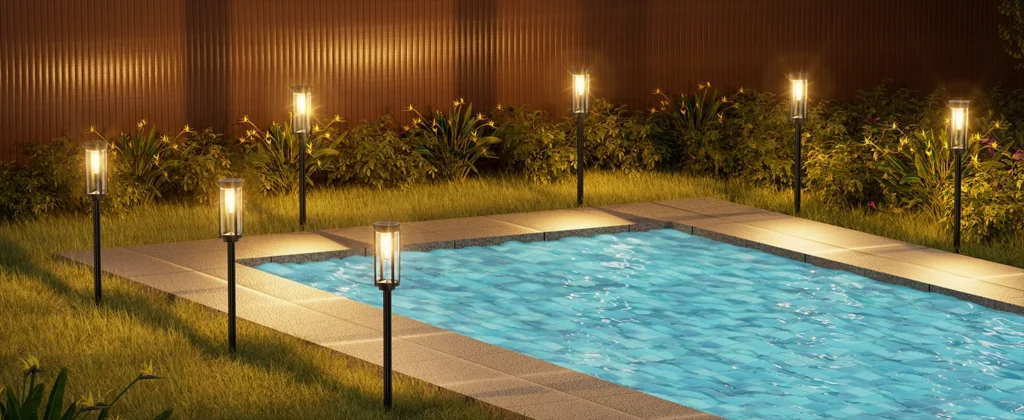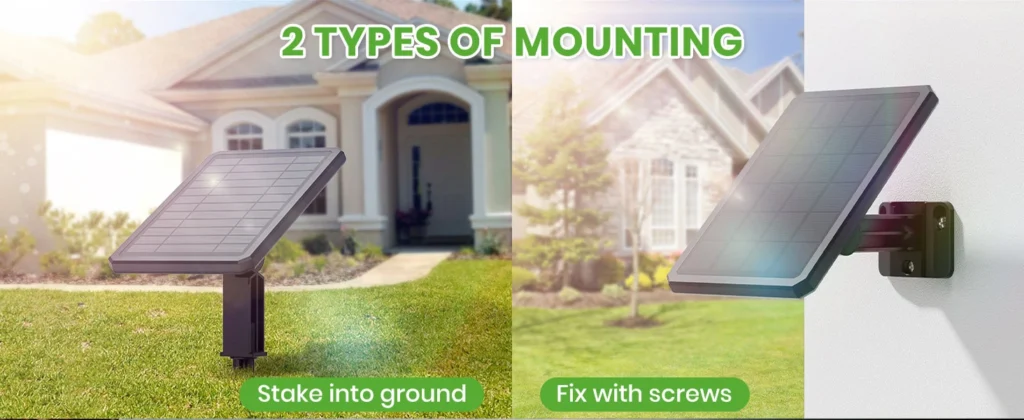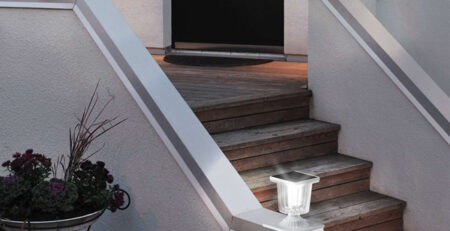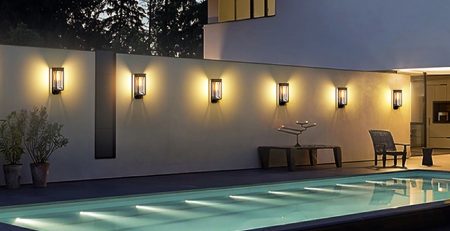Solar Sensor Lights: Navigating Tariff Impacts
Introduction to Solar Lighting and Tariff Impacts
The solar lighting industry has transformed outdoor illumination, offering eco-friendly, cost-effective solutions for gardens, pathways, and patios. Among the most popular innovations are solar lights movement sensor, which combine energy efficiency with enhanced security and convenience. These lights activate only when motion is detected, saving energy while providing targeted illumination. However, recent global trade developments, particularly tariffs on imported solar products, have raised questions about their impact on the industry. Tariffs, or taxes imposed on imported goods, can influence pricing, availability, and consumer choices. This article explores how tariffs affect solar lights movement sensor, their benefits, and strategies for navigating price changes, drawing insights from industry trends and consumer needs.

Understanding Tariffs and Their Impact
What Are Tariffs in the Solar Industry?
Tariffs are government-imposed taxes on imported goods, designed to protect domestic industries, generate revenue, or address trade imbalances. In the solar industry, tariffs often target components like photovoltaic cells, batteries, and LED modules, which are critical for manufacturing solar lights movement sensor. These taxes increase the cost of importing raw materials or finished products, potentially raising retail prices for consumers.
Recent Tariff Policy Changes
Over the past few years, tariff policies have shifted globally. For instance, in 2022, the U.S. imposed tariffs on solar panels and components from certain Asian countries to bolster domestic manufacturing, as noted in a Reuters article on solar trade policies. Similar measures have emerged in Europe and other regions, with the EU reviewing anti-dumping duties on Chinese solar imports, per a 2023 PV Magazine report. These policies, extended into 2025, affect the supply chain for solar lights movement sensor, as many rely on imported components. Temporary tariff exemptions, like those in the U.S. for Southeast Asian solar products until mid-2024, have provided short-term relief but not long-term stability.
Tariff Impacts on Solar Garden Light Costs
Tariffs directly influence the cost of solar lights movement sensor by increasing expenses for manufacturers. A 2024 Solar Power World analysis estimated that tariffs could raise solar product prices by 10-20%, depending on the component and country of origin. For consumers, this translates to higher retail prices, especially for budget-friendly models reliant on low-cost imports. However, premium models with advanced motion sensors and durable designs may absorb these costs better due to their higher margins, offering a trade-off between upfront cost and long-term value.
Benefits of Solar Garden Lights Amid Tariff Changes
Energy Efficiency and Environmental Advantages
Solar lights movement sensor are champions of energy efficiency. Unlike traditional lights, they harness sunlight to charge batteries, eliminating electricity costs and reducing carbon footprints. Motion sensors enhance this efficiency by activating lights only when needed, extending battery life. A 2023 EnergySage article highlighted that solar lights can reduce outdoor lighting energy use by up to 80% compared to grid-powered alternatives. Environmentally, they decrease reliance on fossil fuels, aligning with global sustainability goals, even as tariffs challenge affordability.
Cost Savings Over Time
Despite potential price hikes from tariffs, solar lights movement sensor remain cost-effective long-term. Their zero-energy-cost operation offsets initial expenses, especially for high-quality models with robust sensors and weather-resistant designs. For example, a $50 solar light with a 10-year lifespan could save $100-$200 in electricity costs, based on average U.S. rates from the U.S. Energy Information Administration. Tariffs may increase upfront costs, but savings over time make these lights a smart investment for budget-conscious homeowners.
Versatility in Design and Application
Solar lights movement sensor offer unmatched versatility. Available in styles from sleek pathway stakes to decorative wall-mounted fixtures, they suit diverse outdoor spaces—gardens, driveways, or patios. Motion sensors add functionality, deterring intruders or guiding guests along paths. A 2024 This Old House review praised their ease of installation, requiring no wiring, which appeals to DIY enthusiasts. Tariffs may limit some low-cost options, but the variety of designs ensures consumers can find lights matching their aesthetic and functional needs.
Navigating Tariff-Driven Price Changes
Strategies for Cost-Effective Purchases
Tariffs may raise prices, but savvy consumers can still find affordable solar lights movement sensor. Shopping during seasonal sales, such as spring gardening promotions, or buying in bulk for larger projects can reduce costs. Online marketplaces often feature competitive pricing, though consumers should verify seller credibility. A 2024 CNET guide recommended checking product specifications, like lumens and battery capacity, to ensure value. Comparing prices across retailers and prioritizing features like adjustable sensors or waterproofing helps balance cost and quality.
Comparing Quality and Longevity
Not all solar lights movement sensor are equal. Tariffs may tempt consumers toward cheaper models, but poor-quality lights often fail quickly, negating savings. Key factors to consider include battery type (lithium-ion lasts longer than NiMH), sensor range (10-30 feet is standard), and material durability (stainless steel or UV-resistant plastic withstands weather). A 2023 The Spruce article emphasized checking warranty periods—1-2 years is typical for reliable models. Investing in quality ensures longevity, offsetting tariff-driven price increases.
Maximizing Value Under Tariffs
To maximize value, consumers can optimize their use of solar lights movement sensor. Positioning lights in sunny, unshaded areas boosts charging efficiency, while regular cleaning of solar panels maintains performance. Adjustable sensors allow customization of sensitivity and duration, conserving energy. A 2024 HGTV tutorial suggested grouping lights strategically to cover larger areas with fewer units, reducing overall costs. These practical tips help consumers get the most from their investment, even as tariffs reshape the market.

Future Outlook for Solar Garden Lights
Trends in Solar Technology Amid Tariffs
The solar lighting industry is innovating despite tariff challenges. Advances in motion sensor technology, such as dual-zone detection or AI-enhanced triggers, improve accuracy and efficiency. A 2025 CleanTechnica forecast predicted that integrated smart features, like app-controlled settings, will become standard in premium solar lights movement sensor. Higher-efficiency solar cells and longer-lasting batteries are also emerging, reducing reliance on tariff-affected components. These trends promise enhanced performance, even if initial costs rise.
Domestic Production to Offset Tariff Impacts
Tariffs are spurring domestic solar manufacturing, which could stabilize prices for solar lights movement sensor. In the U.S., new solar factories in states like Georgia and Texas, as reported by Bloomberg in 2024, aim to reduce import dependency. Europe is similarly expanding local production, per a 2023 Solar Energy Industries Association report. While domestic products may initially cost more due to higher labor costs, economies of scale could lower prices over time, offering consumers more tariff-resistant options.
Encouraging Sustainable Choices
Tariffs highlight the importance of sustainable purchasing decisions. Solar lights movement sensor support eco-conscious lifestyles by reducing energy consumption and waste. Consumers can further sustainability by choosing recyclable or repairable models, as advised in a 2024 Green Living article. Supporting brands with transparent supply chains also aligns with ethical consumption. As tariffs reshape the market, prioritizing sustainability ensures long-term environmental and financial benefits.
Conclusion
Solar lights movement sensor offer a compelling blend of energy efficiency, cost savings, and versatility, making them ideal for modern outdoor spaces. While tariffs on solar imports may increase prices, their long-term benefits remain strong. By understanding tariff impacts, comparing quality, and adopting smart purchasing strategies, consumers can navigate price changes effectively. Looking ahead, innovations in solar technology and growing domestic production promise a bright future for these lights. Homeowners are encouraged to invest in high-quality solar lights movement sensor, balancing cost with sustainability for informed, eco-friendly decisions.


-1-450x231.webp)




-2-450x231.webp)
-4-1-450x231.webp)


Leave a Reply